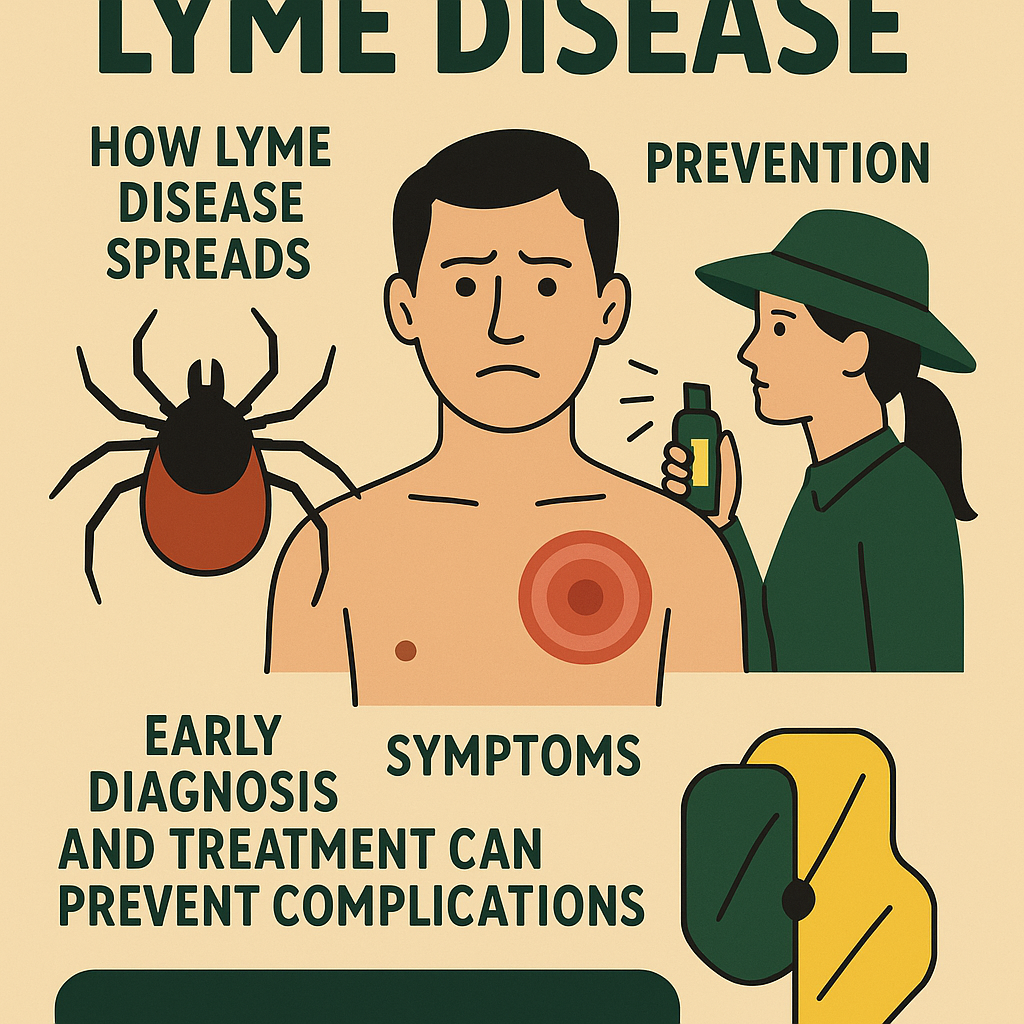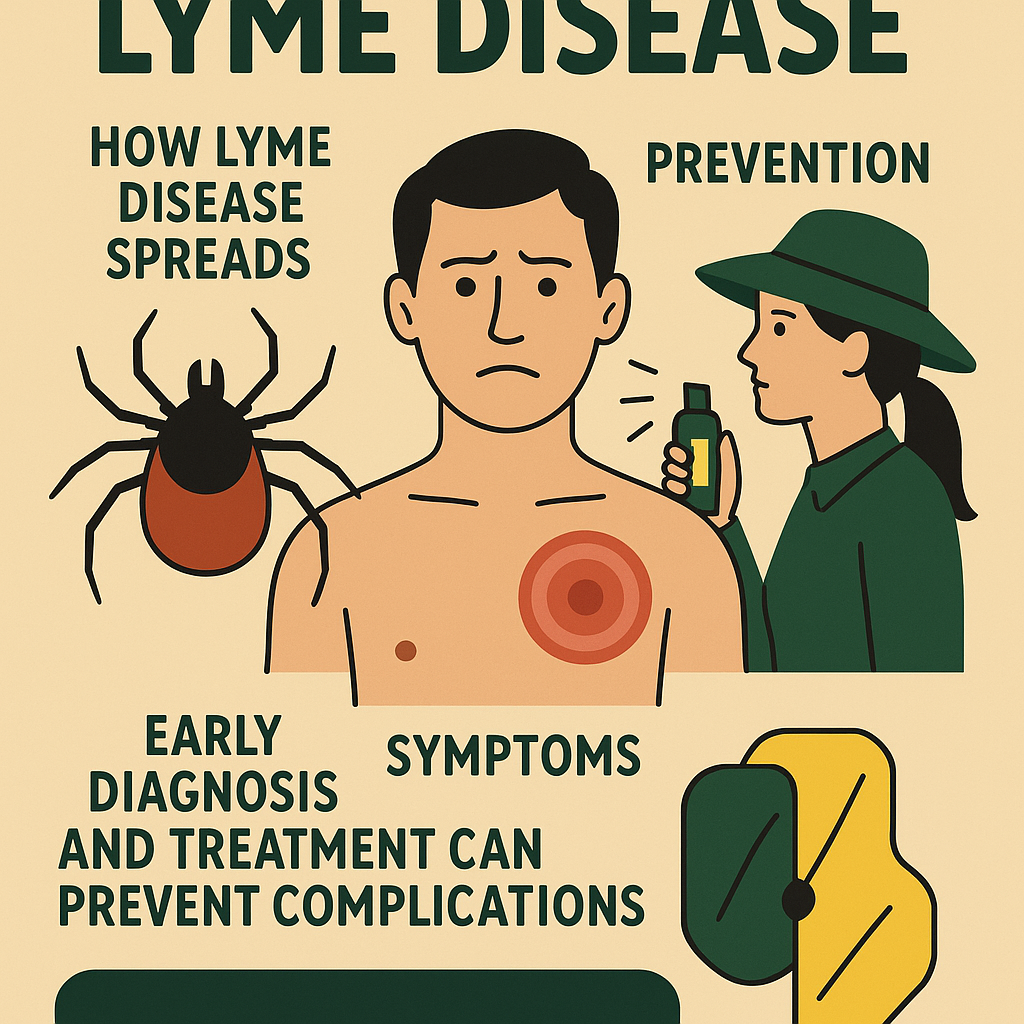Physical Address
304 North Cardinal St.
Dorchester Center, MA 02124
Physical Address
304 North Cardinal St.
Dorchester Center, MA 02124


Lyme disease is one of the fastest-growing infectious diseases in the world today, particularly in North America and Europe. Caused by the bacterium Borrelia burgdorferi, it is primarily transmitted to humans through the bite of infected black-legged ticks, commonly known as deer ticks. Understanding the facts about Lyme disease can help you stay safe, recognize symptoms early, and get the right treatment before the condition worsens.
Lyme disease is a bacterial infection transmitted through the bite of infected ticks. Once inside the body, the bacteria can spread to joints, the heart, and the nervous system, leading to serious complications if not treated early.
First identified in Lyme, Connecticut in the 1970s, the disease has since become widespread in many parts of the world. With increased awareness and tick population growth, Lyme disease is now a growing public health concern.
Ticks act as vectors, carrying the bacteria from host animals like mice and deer to humans. Most infections occur in the spring and summer months when ticks are most active.
High-risk areas include the Northeastern, Midwestern, and Pacific Northwestern regions of the United States. Countries like Canada, Germany, and parts of the UK also report rising cases annually.
In the early stages, symptoms resemble the flu—fever, chills, muscle aches, and fatigue. These signs can easily be dismissed, which is why many infections go undetected at first.
Approximately 70–80% of infected individuals develop a distinctive round rash around the tick bite. This “bull’s-eye” rash can expand over several days and is a clear sign to seek medical attention.
If untreated, Lyme disease can cause facial palsy, memory loss, and even meningitis. These symptoms can appear weeks or even months after the initial tick bite.
Chronic joint inflammation, especially in the knees, is common in the late stages of Lyme. Some cases develop Lyme arthritis, which can last for years without proper treatment.
Most doctors use two-step blood testing (ELISA and Western blot) to confirm Lyme disease. However, early tests may not always be accurate due to low antibody levels shortly after infection.
Because symptoms overlap with other illnesses, misdiagnosis is common. Patients may be wrongly diagnosed with chronic fatigue syndrome, fibromyalgia, or multiple sclerosis.
Doxycycline is often the first choice for treating Lyme disease. Amoxicillin or cefuroxime axetil are alternatives, especially for children and pregnant women.
Some patients explore herbal therapies, probiotics, or immune boosters. While these can offer symptom relief, they should be used alongside—not in place of—antibiotics.
Even after successful antibiotic treatment, some patients continue to experience fatigue, joint pain, and brain fog. The cause of PTLDS is still under study, but supportive care and lifestyle adjustments can help manage the symptoms.
Wearing long sleeves, pants, and using tick repellents containing DEET or permethrin can significantly reduce the risk of bites.
After outdoor activities, check for ticks—especially in hidden spots like the scalp, groin, and behind the ears. Use fine-tipped tweezers to remove ticks quickly and clean the area thoroughly.
Children may show irritability, fatigue, or even behavioral changes. Educate kids about tick safety and dress them appropriately for outdoor play.
Pets can bring ticks into the home. Use vet-approved tick preventatives, and inspect their fur regularly—especially after walks in wooded or grassy areas.
Seek medical help if you’ve had a recent tick bite and notice:
Eating anti-inflammatory foods, getting regular light exercise, and stress management can help reduce symptoms and improve quality of life.
Join online forums or local support groups for emotional and informational support. Many organizations also offer tools and webinars to aid your recovery.
Scientists are working on new Lyme disease vaccines for humans. One such vaccine, VLA15, is in late-stage clinical trials and shows promise in preventing infection.
1. Can Lyme disease be cured?
Yes, most cases are successfully treated with antibiotics, especially when caught early.
2. How soon do symptoms appear after a tick bite?
Symptoms typically appear within 3 to 30 days.
3. Can I get Lyme disease more than once?
Yes, it’s possible to be reinfected after a full recovery.
4. Is there a vaccine available now?
Currently, there is no human vaccine, but several are under development.
5. Are pets at risk?
Yes, especially dogs. They should be regularly checked and treated for ticks.
6. Can Lyme disease spread from person to person?
No, it is not contagious and cannot be spread between people.
Lyme disease is a serious condition, but with early detection, appropriate treatment, and preventive measures, you can protect yourself and your loved ones. Stay vigilant in tick-prone areas, understand the symptoms, and don’t hesitate to seek medical help if something feels off.